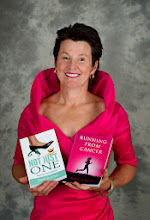It’s a slippery argument to say the least.
While both olive and canola oil are deemed heart healthy oils the two are very
different. Olive oil is made by pressing ripe olives and collecting their
juices; canola oil is made from a hybrid of the rapeseed plant. The different types of olive oil refer to the amount of
pressings. Cold pressed being the best method to extract all the nutrients, extra
virgin being the first most beneficial pressing while pure and light being the
last, least beneficial.
Here's what I found:
Canola oil is manufactured at high temperatures, using a
mechanical process that often involves the toxic chemical hexane. Hexane is extremely harmful to humans yet "probably" safe at the low levels found in Canola oils. Canola oil
is degummed, deodorized, bleached and further refined at high temperatures.
All in all, olive oil is considered the healthier oil because of
the nutrients it contains. Extra virgin olive oil contains antioxidants,
polyphenols and omega-3 fatty acids with can promote cardiovascular health and
cognitive function as well as boosting your immune system and protecting you
from many types of cancer. Olive oil can even help prevent or reverse type 2
diabetes, since it helps your body produce adiponectin, a hormone that helps
regulate blood sugar levels. Olive oil even has anti-inflammatory properties,
and can be of immense benefit to those with inflammatory diseases like
arthritis and osteoporosis.
But I
also read that that while the two oils are identical in caloric content (9
calories/gram), canola oil has less saturated fat than olive oil. Your body
needs a certain amount of fat per day (about 25 percent to 30 percent of
calories consumed) to function normally, but saturated fat is associated with
increased LDL and cardiovascular disease, so canola oil is the better choice. It's also high in the omega-3 fatty acids and other monounsaturated fats that help to promote healthy cardiovascular function.
So confusing
………………..
Until I found this:
OMEGA-3 FATTY
ACIDS
Unsaturated, or heart-healthy,
fats are not identical with regard to their function in the body. Some fall
into the sub-category of omega-3 fatty acids, which, according to the Mayo
Clinic, are particularly helpful in reducing the risk of heart disease and
atherosclerosis (hardening of the arteries). According to Canola Info, canola
oil is higher in omega-3 fatty acids (11 percent of the total fat) than olive
oil, in which only 1 percent of the total fat is omega-3.
OMEGA-6 FATTY ACIDS
Omega-6 fatty acids also are
unsaturated fats, but they are less beneficial to the cardiovascular system
than other unsaturated fats. According to the Mayo Clinic, although omega-6
fatty acids don't increase LDL like saturated fats do, they can lead to
swelling of artery linings, which is associated with narrowed arteries and
heart disease. Canola Info says canola oil contains 21 percent omega-6 fatty
acids, a much higher percentage of these less healthy fatty acids than olive
oil, which contains only 9 percent.
I think
I like the cancer preventitive polyphenols and anitoxidants together with the fact that olive oil is a
natural, non-modified food.
Yet you have to also garner in that olive oil has a slight taste
where canola oil does not, so health benefits aside, some chefs prefer canola
when baking.
Personally,
I can’t imagine anything tasting bad when olive flavoured?
You
decide.



